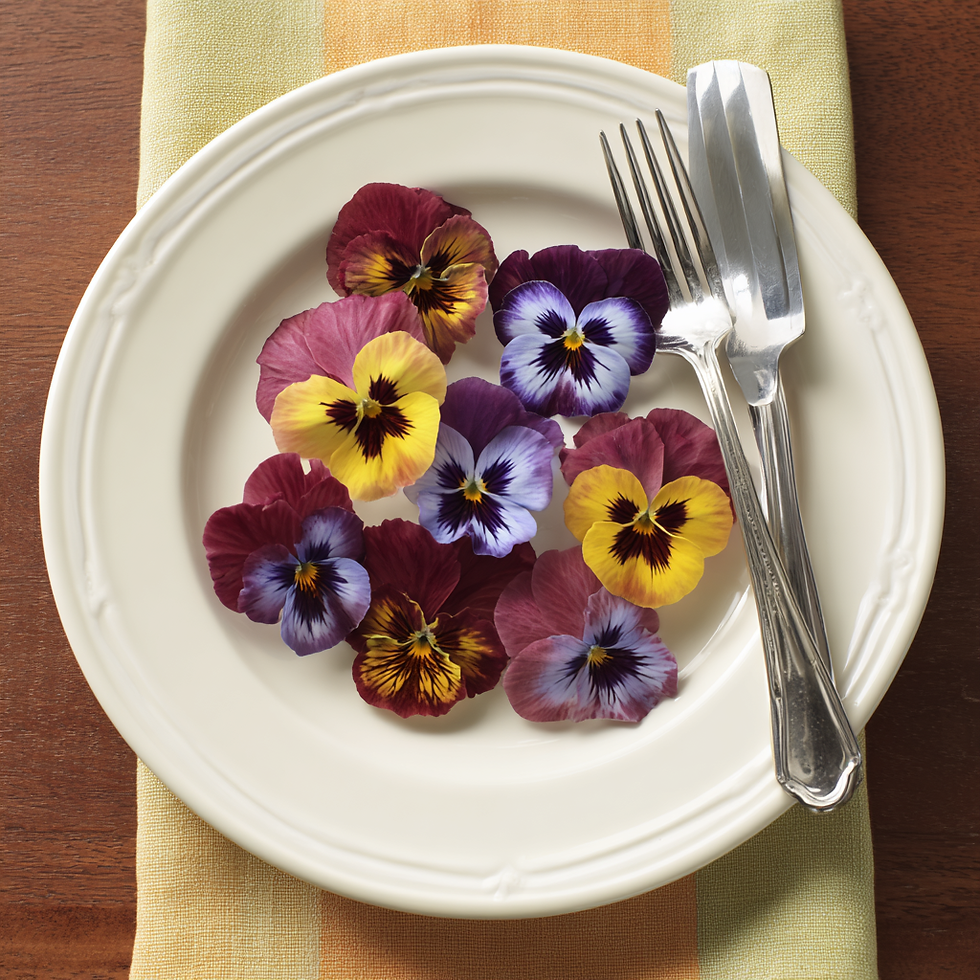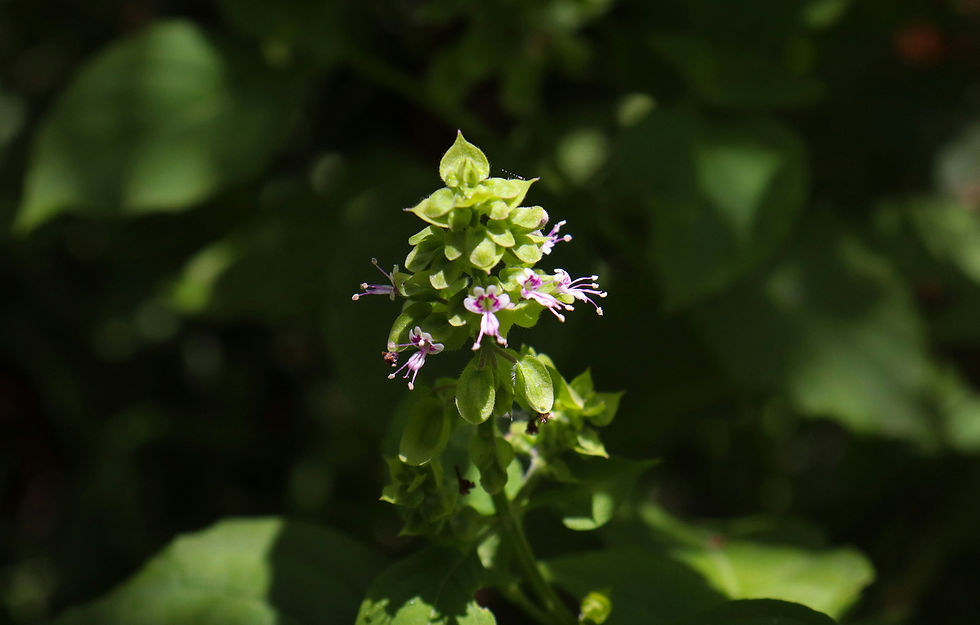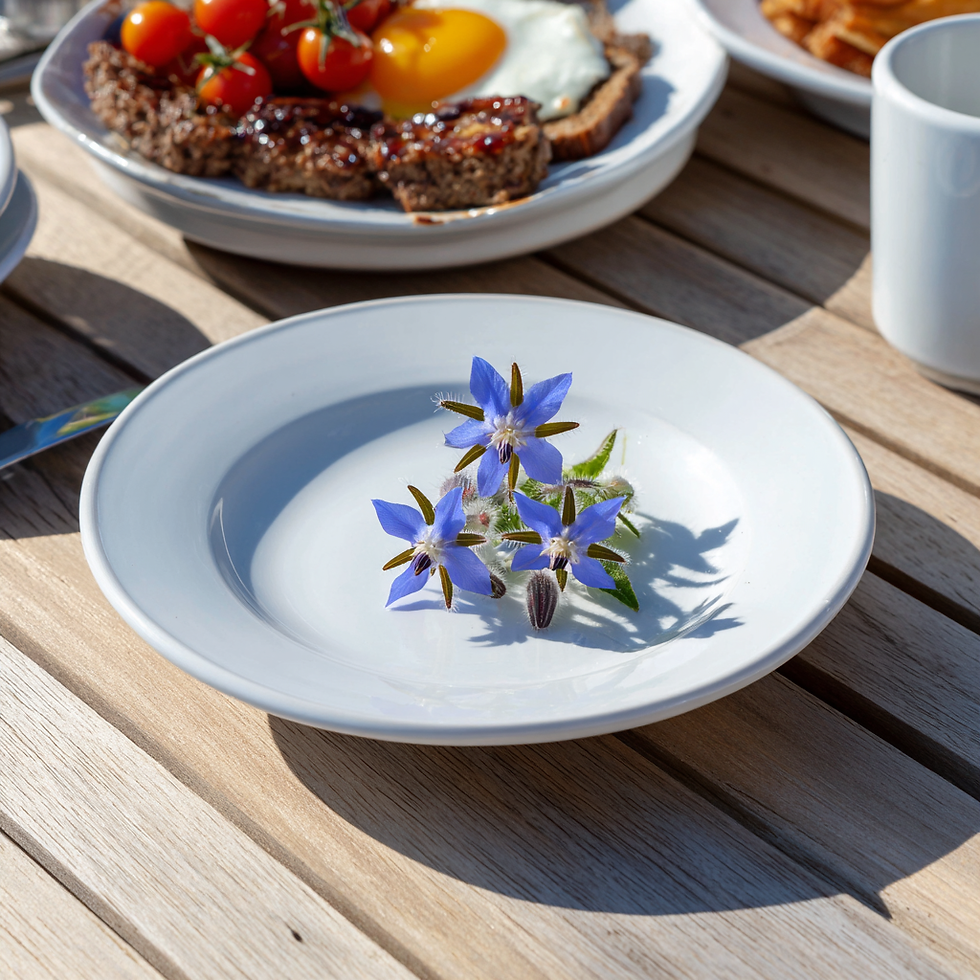How to Grow Edible Flowers (and 5 Ways to Use Them in Everyday Cooking)
- ER Kent

- Aug 1
- 3 min read
From nasturtiums in your salad to violets in your jam, here’s how to plant, pick, and plate edible flowers that turn any dish into a showstopper

Edible flowers are having a serious moment—and not just in the world of Michelin-starred plating or spring wedding cakes. These colorful, flavorful blooms are surprisingly easy to grow and even easier to use in everyday meals, adding floral flavor, vibrant color, and a whisper of wild elegance to everything from salads to cocktails.
Whether you’ve got a backyard garden or just a sunny windowsill, here’s how to start growing edible flowers at home—plus five fun and delicious ways to use them in your cooking.

What Makes a Flower Edible?
Not every flower is safe to eat. Many are mildly toxic, and some are downright poisonous. But dozens of blooms are completely safe, and in many cases, packed with antioxidants, vitamins, and delicate flavors ranging from spicy to citrusy.
According to the University of Minnesota Extension, edible flowers should always be:
Free from pesticides or synthetic fertilizers
Grown for consumption (not from a florist!)
Properly identified (never guess—some lookalikes are toxic)
Harvested young, in the morning, when flavor and moisture peak

The 7 Best Edible Flowers for Beginners to Grow
Nasturtiums – Peppery and bright, with round, water lily–like leaves. Every part is edible, and they grow like crazy in pots.
Calendula – Sometimes called “poor man’s saffron,” this marigold adds gold-orange petals with a tangy flavor.
Borage – Star-shaped blue blossoms that taste faintly of cucumber; great in drinks and ice cubes.
Chive Blossoms – Mild onion flavor and a gorgeous lavender hue.
Violas & Pansies – Delicate and sweet, perfect for garnishing desserts.
Bee Balm (Monarda) – Tastes like minty oregano; beloved by pollinators too.
Herb Flowers – Basil, thyme, rosemary, and dill all produce edible blooms—tiny but mighty.

The Royal Horticultural Society maintains a detailed list of common edible flowers and their uses. They recommend growing these in well-drained soil with plenty of sunlight and using organic practices if you’re consuming them.

5 Delicious Ways to Use Edible Flowers
1. Toss Them into Salads Brighten up greens with whole nasturtium blooms, torn calendula petals, or chive blossoms. Not only are they beautiful, but many flowers have a slight bitterness or spiciness that balances vinaigrettes and creamy dressings.
2. Infuse Them into Butter or Honey Use soft edible petals (like violets or lavender) to create a compound butter for toast or biscuits, or steep them into honey for a floral drizzle. The Herbal Academy offers guides for safe flower infusion that retain both flavor and health benefits.
3. Bake Them into Cookies and Cakes Press edible blooms into shortbread or layer them on top of frosting. You can also crystallize flowers using egg white and sugar, a Victorian technique that’s now trending on modern pastry blogs l
4. Freeze Them into Ice Cubes or Sorbet Drop borage, pansies, or tiny herb flowers into ice cube trays for cocktails or lemonade. They not only chill your drink—they turn it into art. Edible flower cubes are a favorite on gardening and entertaining blogs.
5. Make Floral Simple Syrup or Tea Infuse rose, chamomile, or lavender into simple syrups for cocktails, or steep them for soothing herbal teas. This works beautifully with homegrown flowers, especially if harvested before full bloom when oils are strongest. Just be sure you’re using flowers labeled safe for ingestion by sources like Modern Farmer.

Bonus: Safety Tips for Cooking with Flowers
Never eat flowers from a florist or landscaping service—they’re likely treated with chemicals.
When in doubt, consult a guide like the Edible Flower Chart by Colorado State University Extension, which lists scientific names and edible parts.
If someone has a pollen allergy, start small—some edible flowers can cause mild reactions in sensitive individuals.

Floral Doesn’t Have to Be Fussy
Growing and cooking with edible flowers isn’t about perfection. It’s about bringing beauty and nature into your everyday meals, one petal at a time. Whether you’re making lavender lemon bars or tossing borage into a gin fizz, edible flowers are a joyful reminder that food is more than fuel—it’s art, medicine, and storytelling all at once.








Comments